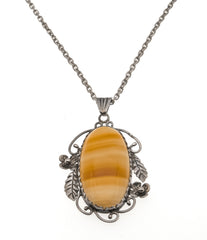Deco Delight - Art Deco 14K Gold Natural 'Old Mine Cut & Old European Cut' Diamond Ring (ADR293)
Rarities Antique Jewelry
Deco Delight - Art Deco 14K Gold Natural 'Old Mine Cut & 'European Cut' Diamond Ring. This gorgeous ring is crafted from 14K yellow and white gold, hallmarked 585 (European hallmark for 14K), and an early inscription. of initials and a partial date. This gorgeous ring features one natural Old Mine Cut diamond, two natural Old European Cut diamonds, 4 natural diamond chips, Art Deco era styling, and quality craftsmanship. The gallery on this ring exhibits wonderful open-work, graceful scalloped edges, and delicate circular frames, which are adorned by sparkling diamonds. The shoulders are also set with glowing diamond chips and a pretty split-work design. The shank is solid, smooth, and polished, which allows for a comfortable fit, and easy sizing. This Art Deco era ring would make a fabulous addition to any jewelry collection.
Note: Contemporary appraisals do not reflect the value of antique/vintage jewelry. Appraisal included with the ring.
History: The earliest diamonds were found in India in 4th century BC, although the youngest of these deposits were formed 900 million years ago. A majority of these early stones were transported along the network of trade routes that connected India and China, commonly known as the Silk Road.
The Old Mine Cut diamond, a historical style of diamond cutting, gained popularity in the late 18th centuries, particularly during the Georgian, Victorian, and Edwardian eras. Originally used to describe diamonds from older mines in Brazil and India, the term eventually encompassed any diamond cut in a similar squarish shape with a high crown, small table, and large culet. These diamonds were hand-cut and known for their unique, often asymmetrical, facets, which produced a softer, more subtle brilliance than modern cuts.
You cannot look at Old Mine Cut diamonds with a formula in mind, its value is object driven. They are a greater challenge in estimating weight once they have been mounted (especially if they are closed back). The Old Mine Cut diamonds are hand cut, which makes them so special .
The Old European Cut, a historic diamond cut, evolved in Europe and gained popularity between 1890 and 1930, serving as a precursor to the modern Round Brilliant cut. It's characterized by its round shape, high crown, and a small table, offering a unique charm due to being hand-cut. This cut was especially popular during the Edwardian and Art Deco periods.
In 1953, GIA formally created its diamond grading system, known as the 4 C's. The 4 Cs of diamond quality are the universally recognized diamond grading system still to be used today. 1n 1955, GIA presented its first diamond grading reports, which became the hallmark of grading reports in the diamond industry. Before this time in antiquity clients did not care about diamond grading. It was based more so on the size of the diamonds ( according to budget) , style, and sentiment.
Gold was generally used for a couple thousand years solely to create things such as jewelry and idols for worship. This was until around 1500 BC when the ancient empire of Egypt, which benefited greatly from its gold-bearing region, Nubia, made gold the first official medium of exchange for international trade.
White gold emerged in the 20th century as a popular alternative to platinum, initially driven by its affordability and similar aesthetic appeal. While platinum was expensive and sometimes scarce, white gold offered a more accessible option while still providing a luxurious look, particularly for engagement rings and wedding bands. Its rise in popularity also coincided with the Edwardian and Art Deco movement, where its sleek, modern design complemented the era's aesthetics.
The Art Deco jewelry period flourished from the 1920s to the 1930s, characterized by bold geometric shapes, strong symmetry, and streamlined forms, a stark contrast to the softer, naturalistic Art Nouveau style that preceded it. Key influences included Cubism, the discovery of Tutankhamun's tomb, and industrial advancements, while popular materials featured platinum, white gold, diamonds, and colorful gemstones like onyx, emeralds, and rubies.
Measurements: Face of the Ring 23.00 mm x 11.50 mm
Stone Size: Diamond (Old Mine Cut) .10 carat Old European Cut .14 carats Diamond chips .04 carats Diamond Total Weight: .28 carats
Weight: 6.16 grams
Ring Size: 9
Condition: Excellent
Origin: Europe
Date: Circa 1930





















